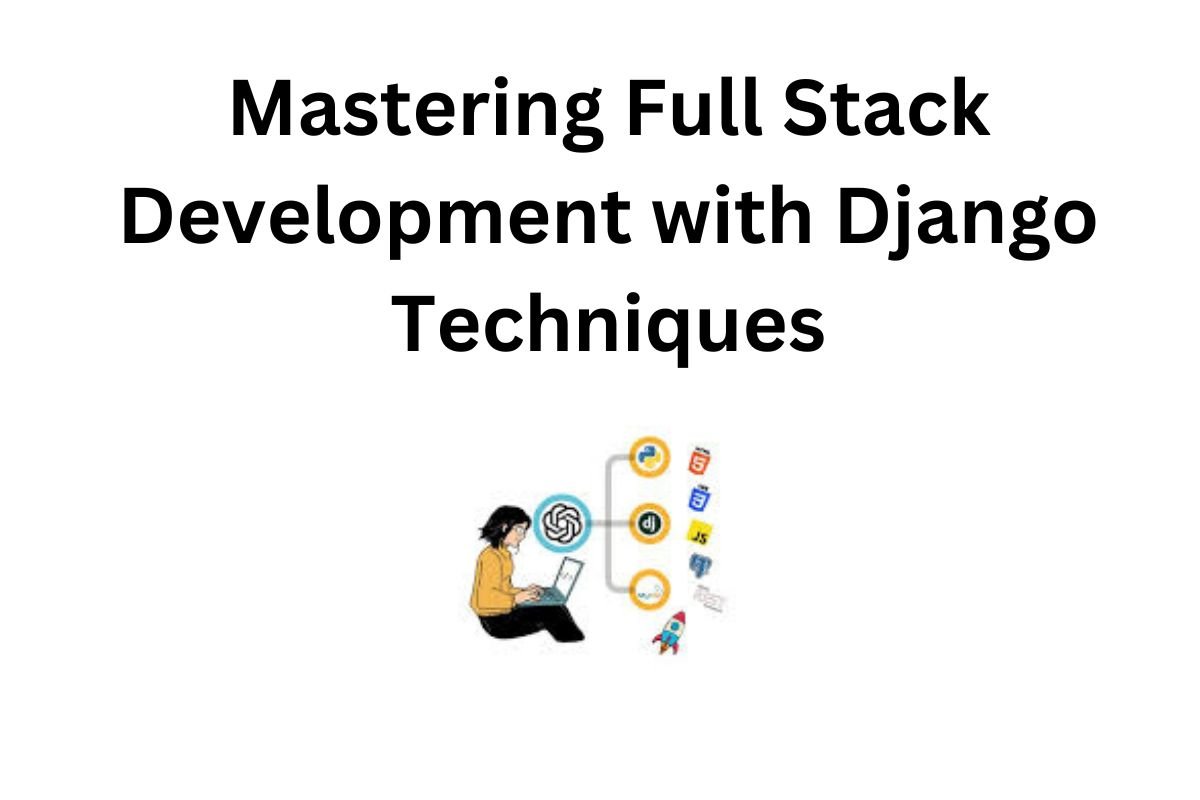Introduction to Full Stack Development
Full stack development involves creating both the front-end (what users see and interact with) and the back-end (how data is processed and stored) of a web application. A full stack developer has the skills to manage everything from the user interface to the server, database, and APIs that power an application. In today’s competitive tech landscape, mastering full stack development allows developers to build comprehensive applications that handle all parts of the web development process.
One of the best tools for full stack development is Django, a Python-based web framework known for its speed, scalability, and ease of use. Django provides developers with everything they need to build powerful web applications, without needing to start from scratch.
Why Use Django for Full Stack Development?
Django is a preferred choice for full stack development for several reasons:
- Python-based: Since Django is built on Python, it benefits from the simplicity and readability of the Python language. Python is beginner-friendly and widely used in various domains such as web development, data science, and artificial intelligence, making Django a versatile framework.
- Out-of-the-box Features: Django comes with pre-built tools that simplify tasks like authentication, database management, URL routing, and form handling. This means you don’t need to spend time building these features from scratch, allowing you to focus on creating your application.
- Security: Django places a strong emphasis on security. It automatically protects against common web vulnerabilities like SQL injection, cross-site scripting (XSS), and cross-site request forgery (CSRF), ensuring your application is more secure by default.
- Scalability: Django is designed to scale easily. Whether you’re working on a small project or a large enterprise-level application, Django can handle high traffic and complex functionality.
- Rapid Development: With Django’s built-in features and tools, you can build applications much faster compared to other frameworks. Its modular design allows you to reuse code, making development faster and more efficient.
Key Techniques in Full Stack Development with Django
To master full stack development with Django, it’s important to familiarize yourself with some essential techniques. Below are the key areas you should focus on:
1. Understanding the Model-View-Template (MVT) Architecture
Django follows the Model-View-Template (MVT) architecture, which is a variation of the popular MVC (Model-View-Controller) pattern. Here’s how it works:
- Model: Represents the data structure of your application and interacts with the database. It defines the database schema and handles all data-related logic.
- View: Contains the logic that processes requests and returns responses. Views fetch data from the model, apply business logic, and pass the data to templates.
- Template: Responsible for rendering the HTML pages that users see. Templates take data from views and format it for display on the web.
Understanding how these three components work together is crucial to mastering full stack development with Django.
2. Building Reusable and Modular Code
Django encourages developers to build reusable and modular code. One way to achieve this is by creating apps within your Django project. Each app in Django is a self-contained module that can be used in different projects. This modular approach makes it easy to add or remove features without affecting the entire application.
For example, you could create an app for user authentication, another for blog posts, and another for managing payments. These apps can be reused in other projects, making your code more efficient and organized.
3. Using Django’s ORM for Database Management
Django comes with a powerful Object-Relational Mapping (ORM) system that allows you to interact with the database using Python code instead of writing SQL queries. With the ORM, you can create, retrieve, update, and delete records from the database in an intuitive and secure way.
The ORM also supports multiple databases like PostgreSQL, MySQL, and SQLite, giving you the flexibility to choose the database that suits your project. The best part is that Django automatically handles database migrations, so you can make changes to your models without manually modifying the database schema.
4. Creating Dynamic Web Pages with Django Templates
Django’s templating system is designed to help you create dynamic web pages with ease. Templates allow you to inject data from the back-end (via views) into HTML pages that users interact with. This makes it possible to create personalized content, such as user dashboards, search results, or product recommendations.
The template language is simple yet powerful, allowing you to loop through data, apply conditional logic, and reuse code snippets across multiple pages using template inheritance.
5. Implementing Authentication and Authorization
User authentication (login, registration, and logout) is a critical feature in most web applications. Django simplifies this process with its built-in authentication system, which handles everything from password hashing to session management.
In addition to authentication, Django also offers fine-grained control over user permissions and access control. You can restrict certain parts of your application to specific users or groups, ensuring that sensitive data is protected.
6. Handling Forms and User Input
Forms are an essential part of any web application, allowing users to submit data such as comments, contact information, or orders. Django provides a robust forms library that makes it easy to create, validate, and process forms securely.
With Django forms, you can easily handle tasks like validating user input, preventing duplicate submissions, and rendering forms in HTML. This reduces the amount of manual work required to process user input and improves the overall security of your application.
7. Deploying Django Applications
Once your application is ready, deploying it to a live server is the next step. Django can be deployed on a variety of platforms such as Heroku, AWS, DigitalOcean, or PythonAnywhere.
You will need to configure your application for production, including setting up the database, static files (like CSS and JavaScript), and handling traffic via a web server (such as Nginx or Apache). Django’s flexibility ensures that it can be deployed in both small and large-scale environments.
Conclusion
Mastering full stack development with Django equips you with the tools and techniques to build robust, scalable, and secure web applications. Django’s simplicity and power make it a fantastic choice for developers who want to focus on building features rather than worrying about underlying complexities.
By understanding the Model-View-Template architecture, using Django’s ORM for database management, creating dynamic web pages, handling user authentication, and deploying applications effectively, you can become a proficient full stack developer with Django.
For those looking to gain hands-on experience and further their skills, enrolling in a Full stack developer Course in Noida, Delhi, Gurgaon and other locations in India provides an excellent opportunity to learn the full range of skills needed to succeed in full stack development. Whether you’re working on personal projects or large-scale applications, Django’s robust framework supports rapid development while maintaining performance and security.
FAQs on Mastering Full Stack Development with Django Techniques
1. What is full stack development?
Full stack development involves working on both the front-end and back-end of web applications. It requires knowledge of various technologies and frameworks to create a complete software solution.
2. Why use Django for full stack development?
Django is a powerful web framework for Python that promotes rapid development and clean design. Its built-in features, like authentication and ORM, streamline the development process, making it ideal for full stack projects.
3. What are the key components of a full stack application using Django?
Key components include the front-end (HTML, CSS, JavaScript), back-end (Django views, models, and URLs), and database management (Django ORM interacting with databases like PostgreSQL or MySQL).
4. How can I manage static files and media in Django?
Django provides built-in settings for managing static files (CSS, JavaScript) and media files (uploads). Use the STATIC_URL and MEDIA_URL settings along with appropriate folder structures.
5. What role do templates play in Django?
Templates in Django help separate the presentation layer from the business logic. They allow developers to create dynamic HTML pages by integrating Django’s template language with Python code.
Read Also : https://empireadda.com/what-are-the-benefits-of-using-javascript-for-data-science/



